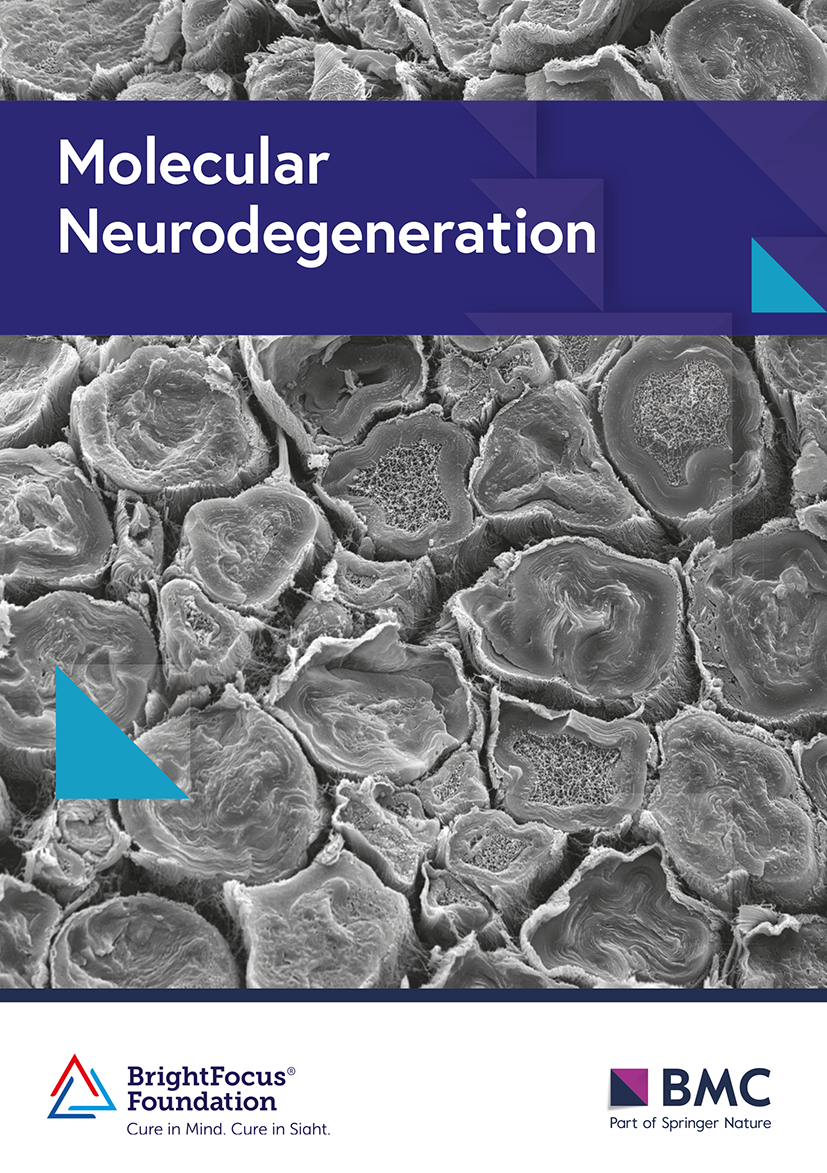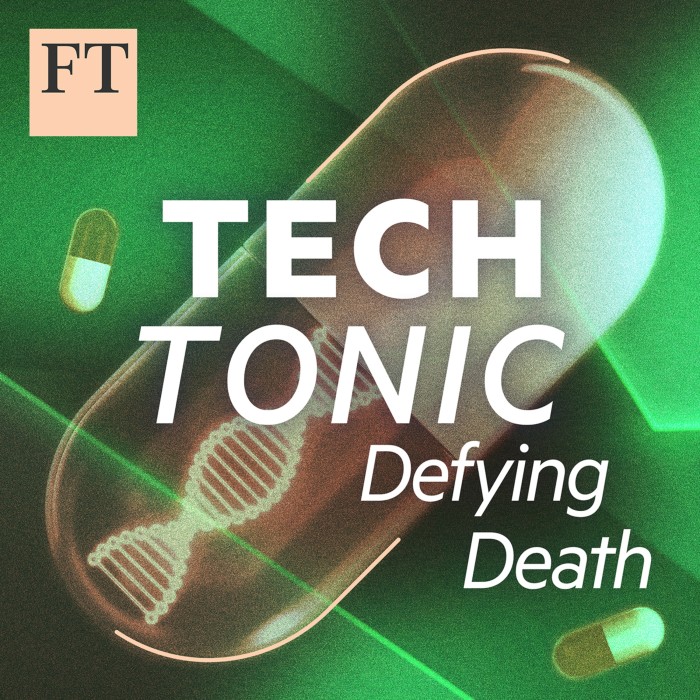Sikkes SAM, Tang Y, Jutten RJ, Wesselman LMP, Turkstra LS, Brodaty H, Clare L, Cassidy-Eagle E, Cox KL, Chételat G, Dautricourt S, Dhana K, Dodge H, Dröes RM, Hampstead BM, Holland T, Lampit A, Laver K, Lutz A, Lautenschlager NT, McCurry SM, Meiland FJM, Morris MC, Mueller KD, Peters R, Ridel G, Spector A, van der Steen JT, Tamplin J, Thompson Z. ISTAART non-pharmacological interventions professional interest Area; bahar-Fuchs A. Toward a theory-based specification of non-pharmacological treatments in aging and dementia: focused reviews and methodological recommendations. Alzheimers Dement. 2021, Feb;17(2):255–70. https://doi.org/10.1002/alz.12188. Epub 2020 Nov 20. PMID: 33215876; PMCID: PMC7970750.
Roach JC, Edens L, Markewych DR, Rapozo MK, Hara J, Glusman G, Funk C, Bramen J, Baloni P, Shankle WR, Hood L. A multimodal intervention for Alzheimer’s disease results in multifaceted systemic effects reflected in blood and ameliorates functional and cognitive outcomes. medRxiv. 2022. https://www.medrxiv.org/content/10.1101/2022.09.27.22280385v2.
Patnode CD, Perdue LA, Rossom RC, et al. Screening for cognitive impairment in older adults: an evidence update for the U.S. Preventive Services Task Force [Internet]. Rockville (MD): Agency for Healthcare Research and Quality (US); 2020 Feb. (Evidence Synthesis, No. 189.) Chapter 1, Introduction. Available from: https://www.ncbi.nlm.nih.gov/books/NBK554658.
Cr J Jr, Andrews JS, Beach TG, Buracchio T, Dunn B, Graf A, Hansson O, Ho C, Jagust W, E M, Molinuevo JL, Okonkwo OC, Pani L, Rafii MS, Scheltens P, Siemers E, Snyder HM, Sperling R, Teunissen CE, Carrillo MC. Revised criteria for diagnosis and staging of Alzheimer’s disease: Alzheimer’s association Workgroup. Alzheimers Dement. 2024, Aug;20(8):5143–69. https://doi.org/10.1002/alz.13859. Epub 2024 Jun 27. PMID: 38934362; PMCID: PMC11350039.
Association A. Alzheimer’s disease facts and figures. Alzheimers Dement. 2025 . 2025 Apr 29;21(4):e70235. https://doi.org/10.1002/alz.70235. PMCID: PMC12040760.
George DR, Qualls SH, Camp CJ, Pj W. Renovating Alzheimer’s: “constructive” reflections on the new clinical and research diagnostic guidelines. The Gerontologist. 2013, Jun;53(3):378–87. https://doi.org/10.1093/geront/gns096. Epub 2012 Aug 30. PMID: 22936533.
Jagust WJ. The changing definition of Alzheimer’s disease. The Lancet Neurol. 2021, Jun;20(6):414–15. https://doi.org/10.1016/S1474-4422(21)00077-6. Epub 2021 Apr 29. PMID: 33933185.
Knopman DS, Petersen RC, Cr J Jr. A brief history of “alzheimer disease”: multiple meanings separated by a common name. Neurology. 2019, May, 28;92(22):1053–59. https://doi.org/10.1212/WNL.0000000000007583. Epub 2019 Apr 26. PMID: 31028129; PMCID: PMC6556090.
De Ninno G, Giuffrè GM, Urbani A, Baroni S. Current perspectives on Alzheimer’s disease fluid biomarkers and future challenges: a narrative review. J Lab Precis Med. 2024;9:25. https://doi.org/10.21037/jlpm-24-1.
Mulumba J, Duan R, Luo B, Wu J, Sulaiman M, Wang F, et al. The role of neuroimaging in Alzheimer’s disease: implications for the diagnosis, monitoring disease progression, and treatment. Explor Neurosci. 2025;4:100675. https://doi.org/10.37349/en.2025.100675.
Ross JA, Dodel R. Preclinical CSF proteomic changes: a milestone in biomarker detection for autosomal dominant Alzheimer’s disease. Signal Transduct Target Ther. 2025, Jan, 20;10(1):16. https://doi.org/10.1038/s41392-024-02109-3. PMID: 39828719; PMCID: PMC11743781.
Dubois B, Villain N, Schneider L, Fox N, Campbell N, Galasko D, Kivipelto M, Jessen F, Hanseeuw B, Boada M, Barkhof F, Nordberg A, Froelich L, Waldemar G, Frederiksen KS, Padovani A, Planche V, Rowe C, Bejanin A, Ibanez A, Cappa S, Caramelli P, Nitrini R, Allegri R, Slachevsky A, de Souza Lc, Bozoki A, Widera E, Blennow K, Ritchie C, Agronin M, Lopera F, Delano-Wood L, Bombois S, Levy R, Thambisetty M, Georges J, Jones DT, Lavretsky H, Schott J, et al. Alzheimer disease as a clinical-biological construct-an International working group recommendation. JAMA Neurol. 2024, Dec 1;81(12):1304–11. https://doi.org/10.1001/jamaneurol.2024.3770. PMID: 39483064.
Petersen RC, Mormino E, Schneider JA. Alzheimer disease—What’s in a name? JAMA Neurol. 2024;81(12):1245–46. https://doi.org/10.1001/jamaneurol.2024.3766.
Zhang J, Zhang Y, Wang J, Xia Y, Zhang J, Chen L. Recent advances in Alzheimer’s disease: mechanisms, clinical trials and new drug development strategies. Signal Transduct Target Ther. 2024, Aug, 23;9(1):211. https://doi.org/10.1038/s41392-024-01911-3. PMID: 39174535; PMCID: PMC11344989.
Rothman KC. Am J Epidemiol. 1976;141(2):90–95; discussion 89. https://doi.org/10.1093/oxfordjournals.aje.a117417. 1995 Jan 15. PMID: 7817976.
Kaufman JS, Poole C. Looking back on “causal thinking in the health sciences”. Annu Rev Public Health. 2000;21:101–19. https://doi.org/10.1146/annurev.publhealth.21.1.101. PMID: 10884948.
Smith GD, Zena Stein SE. Mervyn Susser and epidemiology: observation, causation and action. Int J Epidemiol. 2002, Feb;31(1):34–37. https://doi.org/10.1093/ije/31.1.34. PMID: 11914289.
Peterson D, Keeley JW. Syndrome, disorder, and disease. In: Eds R.L. Cautin, Lilienfeld SO. In The encyclopedia of clinical psychology. 2015. https://doi.org/10.1002/9781118625392.wbecp154.
Espay AJ, Lang AE. Parkinson diseases in the 2020s and beyond: replacing clinico-pathologic convergence with systems biology divergence. J Parkinsons Dis. 2018;8(s1):S59–64. https://doi.org/10.3233/JPD-181465. PMID: 30584155; PMCID: PMC6311362.
Gong CX, Dai CL, Liu F, Iqbal K. Multi-targets: an unconventional drug development strategy for Alzheimer’s disease. Front Aging Neurosci. 2022, Feb, 9;14:837649. https://doi.org/10.3389/fnagi.2022.837649. PMID: 35222001; PMCID: PMC8864545.
Huang Y, Mucke L. Alzheimer mechanisms and therapeutic strategies. Cell. 2012, Mar, 16;148(6):1204–22. https://doi.org/10.1016/j.cell.2012.02.040. PMID: 22424230; PMCID: PMC3319071.
Zhang X, Fu Z, Meng L, He M, Zhang Z. The early events that initiate β-amyloid aggregation in Alzheimer’s disease. Front Aging Neurosci. 2018, Nov, 13;10:359. https://doi.org/10.3389/fnagi.2018.00359. PMID: 30542277; PMCID: PMC6277872.
Ferrer I. Hypothesis review: Alzheimer’s overture guidelines. Brain Pathol. 2023, Jan;33(1):e13122. https://doi.org/10.1111/bpa.13122. Epub 2022 Oct 12. PMID: 36223647; PMCID: PMC9836379.
Masurkar AV, Marsh K, Morgan B, Leitner D, Wisniewski T. Factors affecting resilience and prevention of Alzheimer’s disease and related dementias. Ann Neurol. 2024, Oct;96(4):633–49. https://doi.org/10.1002/ana.27055. Epub 2024 Aug 17. PMID: 39152774; PMCID: PMC11534551.
Delport A, Hewer R. The amyloid precursor protein: a converging point in Alzheimer’s disease. Mol Neurobiol. 2022, Jul;59(7):4501–16. https://doi.org/10.1007/s12035-022-02863-x. Epub 2022 May 17. PMID: 35579846.
Kikuchi M, Kobayashi K, Itoh S, Kasuga K, Miyashita A, Ikeuchi T, Yumoto E, Kosaka Y, Fushimi Y, Takeda T, Manabe S, Hattori S, Disease Neuroimaging Initiative A, Nakaya A, Kamijo K, Matsumura Y. Identification of mild cognitive impairment subtypes predicting conversion to Alzheimer’s disease using multimodal data. Comput Struct Biotechnol J. 2022 Aug 22;20:5296–308. https://doi.org/10.1016/j.csbj.2022.08.007. PMID: 36212530; PMCID: PMC9513733.
Aihara K, Liu R, Koizumi K, Liu X, Chen L. Dynamical network biomarkers: theory and applications. Gene. 2022, Jan, 15;808:145997. https://doi.org/10.1016/j.gene.2021.145997. Epub 2021 Oct 6. PMID: 34626720.
Chen P, Li Y, Liu X, Liu R, Chen L. Detecting the tipping points in a three-state model of complex diseases by temporal differential networks. J Transl Med. 2017, Oct, 26;15(1):217. https://doi.org/10.1186/s12967-017-1320-7. PMID: 29073904; PMCID: PMC5658963.
Liu R, Chen P, Chen L. Single-sample landscape entropy reveals the imminent phase transition during disease progression. Bioinformatics. 2020, Mar;1(36(5):1522–32. https://doi.org/10.1093/bioinformatics/btz758. Erratum in: Bioinformatics. 2020 Apr 15;36(8):2644. PMID: 31598632.
Uleman JF, Quax R, Melis RJF, Hoekstra AG, Olde Rikkert MGM. The need for systems thinking to advance Alzheimer’s disease research. Psychiatry Res. 2024, Mar;333:115741. https://doi.org/10.1016/j.psychres.2024.115741. Epub 2024 Jan 17. PMID: 38277813.
Taherian Fard A, Ragan MA. Modeling the attractor landscape of disease progression: a network-based approach. Front Genet. 2017, Apr, 18;8:48. https://doi.org/10.3389/fgene.2017.00048. PMID: 28458684; PMCID: PMC5394169.
Higginbotham L, Carter EK, Dammer EB, Haque RU, Johnson ECB, Duong DM, Yin L, De Jager PL, Bennett DA, Felsky D, Tio ES, Lah JJ, Levey AI, Seyfried NT. Unbiased classification of the elderly human brain proteome resolves distinct clinical and pathophysiological subtypes of cognitive impairment. Neurobiol Dis. 2023, Oct, 1;186:106286. https://doi.org/10.1016/j.nbd.2023.106286. Epub 2023 Sep 7. PMID: 37689213; PMCID: PMC10750427.
Neff RA, Wang M, Vatansever S, Guo L, Ming C, Wang Q, Wang E, Horgusluoglu-Moloch E, Song WM, Li A, Castranio EL, Tcw J, Ho L, Goate A, Fossati V, Noggle S, Gandy S, Ehrlich ME, Katsel P, Schadt E, Cai D, Brennand KJ, Haroutunian V, Zhang B. Molecular subtyping of Alzheimer’s disease using RNA sequencing data reveals novel mechanisms and targets. Sci Adv. 2021 Jan 6;7(2):eabb5398. https://doi.org/10.1126/sciadv.abb5398. PMID: 33523961; PMCID: PMC7787497. https://doi.org/10.37349/en.2025.100675.
Tijms BM, Vromen EM, Mjaavatten O, Holstege H, Reus LM, van der Lee S, Wesenhagen KEJ, Lorenzini L, Vermunt L, Venkatraghavan V, Tesi N, Tomassen J, den Braber A, Goossens J, Vanmechelen E, Barkhof F, Pijnenburg YAL, van der Flier Wm, Teunissen CE, Berven FS, Visser PJ. Cerebrospinal fluid proteomics in patients with Alzheimer’s disease reveals five molecular subtypes with distinct genetic risk profiles. Nat Aging. 2024, Jan;4(1):33–47. https://doi.org/10.1038/s43587-023-00550-7. Epub 2024 Jan 9. PMID: 38195725; PMCID: PMC10798889.
Arnold M, Nho K, Kueider-Paisley A, Massaro T, Huynh K, Brauner B, MahmoudianDehkordi S, Louie G, Moseley MA, Thompson JW, John-Williams LS, Tenenbaum JD, Blach C, Chang R, Brinton RD, Baillie R, Han X, Trojanowski JQ, Shaw LM, Martins R, Weiner MW, Trushina E, Toledo JB, Meikle PJ, Bennett DA, Krumsiek J, Doraiswamy PM, Saykin AJ, Kaddurah-Daouk R, Kastenmüller G. Sex and apoe ε4 genotype modify the Alzheimer’s disease serum metabolome. Nat Commun. 2020, Mar, 2;11(1):1148. https://doi.org/10.1038/s41467-020-14959-w. PMID: 32123170; PMCID: PMC7052223.
Fortea J, Pegueroles J, Alcolea D, Belbin O, Dols-Icardo O, Vaqué-Alcázar L, Videla L, Gispert JD, Suárez-Calvet M, Johnson SC, Sperling R, Bejanin A, Lleó A, Montal V. APOE4 homozygozity represents a distinct genetic form of Alzheimer’s disease. Nat Med. 2024 May;30(5):1284–91. https://doi.org/10.1038/s41591-024-02931-w. Epub 2024 May 6. Erratum in: Nat Med. 2024 Jul;30(7):2093. https://doi.org/10.1038/s41591-024-03127-y. PMID: 38710950.
Reisberg B, Jamil IA, Khan S, Monteiro I, Torossian C, Ferris S, Sabbagh M, Gauthier S, Auer S, Shulman MB, Kluger A, Franssen E, Wegiel J. Staging dementia. In: Abou-Saleh MT, Katona C, Kumar A, editors. Principles and practice of geriatric psychiatry. 3rd. John Wiley & Sons, Ltd; 2010. p. 162–69.
Lanctôt KL, Boada M, Tariot PN, Dabbous F, Hahn-Pedersen J, Udayachalerm S, Raket LL, Saiontz-Martinez C, Michalak W, Weidner W, Cummings J. Association between clinical dementia rating and clinical outcomes in Alzheimer’s disease. Alzheimers Dement (amst). 2024, Jan, 17;16(1):e12522. https://doi.org/10.1002/dad2.12522. PMID: 38239329; PMCID: PMC10794857.
Tzeng RC, Yang YW, Hsu KC, Chang HT, Chiu PY. Sum of boxes of the clinical dementia rating scale highly predicts conversion or reversion in predementia stages. Front Aging Neurosci. 2022, Sep 23;14:1021792. https://doi.org/10.3389/fnagi.2022.1021792. PMID: 36212036; PMCID: PMC9537043.
Paterson T, Rohrs J, Hohman TJ, Mapstone M, Levey AI, Hood L, Cory CF. Alzheimer’s disease neuroimaging initiative. In: Multi-omic adni CSF and plasma data integration identifies distinct metabolic transitions in disease progression in Alzheimer’s disease. bioRxiv 2024.07.23.604835;.
Zhang Y, Chen H, Li R, Sterling K, Song W. Amyloid β-based therapy for Alzheimer’s disease: challenges, successes and future. Signal Transduct Target Ther. 2023 Jun 30;8(1):248. https://doi.org/10.1038/s41392-023-01484-7. PMID: 37386015; PMCID: PMC10310781.
Abramowitz A, Weber M. Management of mci in the outpatient setting. Curr Psychiatry Rep. 2024, Aug;26(8):413–21. https://doi.org/10.1007/s11920-024-01514-3. Epub 2024 Jun 10. PMID: 38856858.
Soldevila-Domenech N, Ayala-Garcia A, Barbera M, Lehtisalo J, Forcano L, Diaz-Ponce A, Zwan M, van der Flier Wm, Ngandu T, Kivipelto M, Solomon A, de la Torre R. Adherence and intensity in multimodal lifestyle-based interventions for cognitive decline prevention: state-of-the-art and future directions. Alzheimers Res Ther. 2025 Mar 17;17(1):61. https://doi.org/10.1186/s13195-025-01691-0. PMID: 40098201; PMCID: PMC11912746.
Norton S, Matthews FE, Barnes DE, Yaffe K, Brayne C. Potential for primary prevention of Alzheimer’s disease: an analysis of population-based data. The Lancet Neurol. 2014, Aug;13(8):788–94. https://doi.org/10.1016/S1474-4422(14)70136-X. Erratum in: Lancet Neurol. 2014 Nov;13(11):1070. PMID10.1038/s42255-025-01284-z.
Livingston G, Huntley J, Sommerlad A, Ames D, Ballard C, Banerjee S, Brayne C, Burns A, Cohen-Mansfield J, Cooper C, Costafreda SG, Dias A, Fox N, Gitlin LN, Howard R, Kales HC, Kivimäki M, Larson EB, Ogunniyi A, Orgeta V, Ritchie K, Rockwood K, Sampson EL, Samus Q, Schneider LS, Selbæk G, Teri L, Mukadam N. Dementia prevention, intervention, and care: 2020 report of the lancet commission. Lancet. 2020 Aug 8;396(10248):413–46. https://doi.org/10.1016/S0140-6736(20)30367-6. Epub 2020 Jul 30. PMID: 32738937; PMCID: PMC7392084.
Livingston G, Huntley J, Liu KY, Costafreda SG, Selbæk G, Alladi S, Ames D, Banerjee S, Burns A, Brayne C, Fox NC, Ferri CP, Gitlin LN, Howard R, Kales HC, Kivimäki M, Larson EB, Nakasujja N, Rockwood K, Samus Q, Shirai K, Singh-Manoux A, Schneider LS, Walsh S, Yao Y, Sommerlad A, Mukadam N. Dementia prevention, intervention, and care: 2024 report of the lancet standing commission. Lancet. 2024, Aug, 10;404(10452):572–628. https://doi.org/10.1016/S0140-6736(24)01296-0. Epub 2024 Jul 31. PMID: 39096926.
Uleman JF, Melis RJF, Hoekstra AG, Olde Rikkert MGM, Quax R, Imaging A. Biomarker and lifestyle study of aging and Alzheimer’s disease neuroimaging initiative studies. Exploring the potential impact of multi-factor precision interventions in Alzheimer’s disease with system dynamics. J Biomed Inf. 2023, Sep;145:104462. https://doi.org/10.1016/j.jbi.2023.104462. Epub 2023 Jul 27. PMID: 37516375.
Birks JS, Harvey RJ. Donepezil for dementia due to Alzheimer’s disease. Cochrane Database Syst Rev. 2018 Jun 18;6(6):CD001190. doi: https://doi.org/10.1002/14651858.CD001190.pub3. PMID: 29923184; PMCID: PMC6513124.
Diener C, Holscher HD, Filek K, Corbin KD, Moissl-Eichinger C, Gibbons SM. Metagenomic estimation of dietary intake from human stool. Nat Metab. 2025, Mar;7(3):617–30. https://doi.org/10.1038/s42255-025-01220-1. Epub Feb 18.Erratum in date-in-citation:633. https://doi.org/10.1038/s42255-025-01284-z. PMID: 39966520; PMCID: PMC11949708.
Ridenour TA, Wittenborn AK, Raiff BR, Benedict N, Kane-Gill S. Illustrating idiographic methods for translation research: moderation effects, natural clinical experiments, and complex treatment-by-subgroup interactions. Transl Behav Med. 2016, Mar;6(1):125–34. https://doi.org/10.1007/s13142-015-0357-5. PMID: 27012260; PMCID: PMC4807195.
Tueller S, Ramirez D, Cance JD, Ye A, Wheeler AC, Fan Z, Hornik C, Ridenour TA. Power analysis for idiographic (within-subject) clinical trials: implications for treatments of rare conditions and precision medicine. Behav Res Methods. 2023, Dec;55(8):4175–99. https://doi.org/10.3758/s13428-022-02012-1. Epub 2022 Dec 16. PMID: 36526885; PMCID: PMC9757638.
Zülke AE, Pabst A, Luppa M, Roehr S, Seidling H, Oey A, Cardona MI, Blotenberg I, Bauer A, Weise S, Zöllinger I, Sanftenberg L, Brettschneider C, Döhring J, Lunden L, Czock D, Haefeli WE, Wiese B, Hoffmann W, Frese T, Gensichen J, König HH, Kaduszkiewicz H, Thyrian JR, Riedel-Heller SG. A multidomain intervention against cognitive decline in an at-risk-population in Germany: results from the cluster-randomized AgeWell.De trial. Alzheimers Dement. 2024, Jan;20(1):615–28. https://doi.org/10.1002/alz.13486. Epub 2023 Sep 28. PMID: 37768074; PMCID: PMC10917033.
Damirchi A, Hosseini F, Babaei P. Mental training enhances cognitive function and BDNF more than either physical or combined training in elderly women with mci: a small-scale study. Am J Alzheimers Dis Other Demen. 2018, Feb;33(1):20–29. https://doi.org/10.1177/1533317517727068. Epub 2017 Sep 25. PMID: 28946752; PMCID: PMC10852433.
Bae S, Lee S, Lee S, Jung S, Makino K, Harada K, Harada K, Shinkai Y, Chiba I, Shimada H. The effect of a multicomponent intervention to promote community activity on cognitive function in older adults with mild cognitive impairment: a randomized controlled trial. Complementary Therapies In Med. 2019, Feb;42:164–69. https://doi.org/10.1016/j.ctim.2018.11.011. Epub 2018 Nov 13. PMID: 30670238.
Niotis K, Janney C, Helfman S, Hristov H, Clute-Reinig N, Angerbauer D, Saperia C, Murray S, Westine J, Seifan A, Melendez-Herencia J, Parthasarathy P, Colvee H, Lewis B, Lakis J, Sisser P, Dishary J, Mosse M, Saville D, Rumberger A, McCullough M, Isaacson R. A blood biomarker-guided precision medicine approach for individualized neurodegenerative disease risk reduction and treatment: The future of preventive neurology? (P7-3.016). Neurology. 2025, Apr, 8;104(7_Suppl_1):S7–3.016. https://doi.org/10.1212/WNL.0000000000208443.
Isaacson RS, Hristov H, Saif N, Hackett K, Hendrix S, Melendez J, Safdieh J, Fink M, Thambisetty M, Sadek G, Bellara S, Lee P, Berkowitz C, Rahman A, Meléndez-Cabrero J, Caesar E, Cohen R, Lu PL, Dickson SP, Hwang MJ, Scheyer O, Mureb M, Schelke MW, Niotis K, Greer CE, Attia P, Mosconi L, Krikorian R. Individualized clinical management of patients at risk for Alzheimer’s dementia. Alzheimers Dement. 2019, Dec;15(12):1588–602. https://doi.org/10.1016/j.jalz.2019.08.198. Epub 2019 Oct 31. PMID: 31677936; PMCID: PMC6925647.
Saif N, Hristov H, Akiyoshi K, Niotis K, Ariza IE, Malviya N, Lee P, Melendez J, Sadek G, Hackett K, Rahman A, Meléndez-Cabrero J, Greer CE, Mosconi L, Krikorian R, Isaacson RS. Sex-driven differences in the effectiveness of individualized clinical management of Alzheimer’s disease risk. J Prev Alzheimers Dis. 2022;9(4):731–42. https://doi.org/10.14283/jpad.2022.44. PMID: 36281678.
Roach JC, Rapozo MK, Hara J, Glusman G, Lovejoy J, Shankle WR, Hood L, Consortium COCOA. A remotely coached multimodal lifestyle intervention for Alzheimer’s disease ameliorates functional and cognitive outcomes. J Alzheimers Dis. 2023;96(2):591–607. https://doi.org/10.3233/JAD-230403. PMID: 37840487.
Liu X, Ma Z, Zhu X, Zheng Z, Li J, Fu J, Shao Q, Han X, Wang X, Wang Z, Yin Z, Qiu C, Li J. Cognitive Benefit of a Multidomain Intervention for Older Adults at Risk of Cognitive Decline: A Cluster-Randomized Controlled Trial. Am J Geriatr Psychiatry. 2023;31(3):197–209. https://doi.org/10.1016/j.jagp.2022.10.006. Epub 2022 Nov 1. PMID: 36414488.
Blumenthal JA, Smith PJ, Mabe S, Hinderliter A, Welsh-Bohmer K, Browndyke JN, Doraiswamy PM, Lin PH, Kraus WE, Burke JR, Sherwood A. Longer term effects of diet and exercise on neurocognition: 1-year follow-up of the enlighten trial. J Am Geriatr Soc. 2020, Mar;68(3):559–68. https://doi.org/10.1111/jgs.16252. Epub 2019 Nov 22. PMID: 31755550; PMCID: PMC7056586.
Ngandu T, Lehtisalo J, Korkki S, Solomon A, Coley N, Antikainen R, Bäckman L, Hänninen T, Lindström J, Laatikainen T, Paajanen T, Havulinna S, Peltonen M, Neely AS, Strandberg T, Tuomilehto J, Soininen H, Kivipelto M. The effect of adherence on cognition in a multidomain lifestyle intervention (finger). Alzheimers Dement. 2022, Jul;18(7):1325–34. https://doi.org/10.1002/alz.12492. Epub 2021 Oct 20. PMID: 34668644.
Sandison H, Callan NGL, Rao RV, Phipps J, Bradley R. Observed improvement in cognition during a personalized lifestyle intervention in people with cognitive decline. J Alzheimers Dis. 2023, Jun, 19. https://doi.org/10.3233/JAD-230004. Epub ahead of print. PMID: 37355891.
Sakurai T, Sugimoto T, Akatsu H, Doi T, Fujiwara Y, Hirakawa A, Kinoshita F, Kuzuya M, Lee S, Matsumoto N, Matsuo K, Michikawa M, Nakamura A, Ogawa S, Otsuka R, Sato K, Shimada H, Suzuki H, Suzuki H, Takechi H, Takeda S, Uchida K, Umegaki H, Wakayama S, Arai H. J-MINT study group. Japan-multimodal intervention trial for the prevention of dementia: a randomized controlled trial. Alzheimers Dement. 2024, Jun;20(6):3918–30. https://doi.org/10.1002/alz.13838. Epub 2024 Apr 22. PMID: 38646854; PMCID: PMC11180858.
Rosenberg A, Untersteiner H, Guazzarini AG, Bödenler M, Bruinsma J, Buchgraber-Schnalzer B, Colombo M, Crutzen R, Diaz A, Fotiadis DI, Hilberger H, Huber S, Kaartinen N, Kassiotis T, Kivipelto M, Lehtisalo J, Loukas VS, Lötjönen J, Pirani M, Thunborg C, Hanke S, Mangialasche F, Mecocci P, Stögmann E, Ngandu T. On behaf of the lethe consortium. A digitally supported multimodal lifestyle program to promote brain health among older adults (the lethe randomized controlled feasibility trial): study design, progress, and first results. Alzheimers Res Ther. 2024, Nov, 21;16(1):252. https://doi.org/10.1186/s13195-024-01615-4. PMID: 39574193; PMCID: PMC11580696.
Ornish D, Madison C, Kivipelto M, et al. Effects of intensive lifestyle changes on the progression of mild cognitive impairment or early dementia due to Alzheimer’s disease: a randomized, controlled clinical trial. Alz Res Ther. 2024;16:122. https://doi.org/10.1186/s13195-024-01482-z.
Chhetri JK, de Souto Barreto P, Cantet C, Pothier K, Cesari M, Andrieu S, Coley N, Vellas B. Effects of a 3-year multi-Domain intervention with or without omega-3 supplementation on cognitive functions in Older subjects with increased caide dementia scores. J Alzheimers Dis. 2018;64(1):71–78. https://doi.org/10.3233/JAD-180209. PMID: 29865075.
Andrieu S, Guyonnet S, Coley N, Cantet C, Bonnefoy M, Bordes S, Bories L, Cufi MN, Dantoine T, Dartigues JF, Desclaux F, Gabelle A, Gasnier Y, Pesce A, Sudres K, Touchon J, Robert P, Rouaud O, Legrand P, Payoux P, Caubere JP, Weiner M, Carrié I, Ousset PJ, Vellas B, Study Group MAPT. Effect of long-term omega 3 polyunsaturated fatty acid supplementation with or without multidomain intervention on cognitive function in elderly adults with memory complaints (MAPT): a randomised, placebo-controlled trial. The Lancet Neurol. 2017, May;16(5):377–89. https://doi.org/10.1016/S1474-4422(17)30040-6. Epub 2017 Mar 27. PMID: 28359749.
Brodaty H, Chau T, Heffernan M, Ginige JA, Andrews G, Millard M, Sachdev PS, Anstey KJ, Lautenschlager NT, Jj M, Jorm L, Kochan NA, Maeder A, Welberry H, San Jose JC, Briggs NE, Popovic G, Mavros Y, Almendrales Rangel C, Noble Y, Radd-Vagenas S, Flood VM, O’Leary F, Lampit A, Walton CC, Barr P, Fiatarone Singh M, Valenzuela M. An online multidomain lifestyle intervention to prevent cognitive decline in at-risk older adults: a randomized controlled trial. Nat Med. 2025, Feb;31(2):565–73. https://doi.org/10.1038/s41591-024-03351-6. Epub 2025 Jan 28. PMID: 39875685.
McEwen SC, Merrill DA, Bramen J, Porter V, Panos S, Kaiser S, Hodes J, Ganapathi A, Bell L, Bookheimer T, Glatt R, Rapozo M, Ross MK, Price ND, Kelly D, Funk CC, Hood L, Roach JC. A systems-biology clinical trial of a personalized multimodal lifestyle intervention for early Alzheimer’s disease. Alzheimers Dement (N Y). 2021, Jul, 20;7(1):e12191. https://doi.org/10.1002/trc2.12191. PMID: 34295960; PMCID: PMC8290633.
Toups K, Hathaway A, Gordon D, Chung H, Raji C, Boyd A, Hill BD, Hausman-Cohen S, Attarha M, Chwa WJ, Jarrett M, Bredesen DE. Precision medicine approach to Alzheimer’s disease: successful Pilot project. J Alzheimers Dis. 2022;88(4):1411–21. https://doi.org/10.3233/JAD-215707. PMID: 35811518; PMCID: PMC9484109.
Yaffe K, Vittinghoff E, Dublin S, Peltz CB, Fleckenstein LE, Rosenberg DE, Barnes DE, Balderson BH, Larson EB. Effect of personalized risk‑reduction strategies on cognition and dementia risk profile among older adults: the SMARRT randomized clinical trial. JAMA Intern Med. 2023;e236279. https://doi.org/10.1001/jamainternmed.2023.6279. Epub ahead of print. PMID: 38010725; PMCID: PMC10682943.
Chen LK, Hwang AC, Lee WJ, Peng LN, Lin MH, Neil DL, Shih SF, Loh CH, Chiou ST. Taiwan health promotion intervention study for elders research group. Efficacy of multidomain interventions to improve physical frailty, depression and cognition: data from cluster-randomized controlled trials. J Cachexia, Sarcopenia Muscle. 2020, Jun;11(3):650–62. https://doi.org/10.1002/jcsm.12534. Epub 2020 Mar 5. PMID: 32134208; PMCID: PMC7296266.
Baker LD, Espeland MA, Whitmer RA, Snyder HM, Leng X, Lovato L, Papp KV, Yu M, Kivipelto M, Alexander AS, Antkowiak S, Cleveland M, Day C, Elbein R, Tomaszewski Farias S, Felton D, Garcia KR, Gitelman DR, Graef S, Howard M, Katula J, Lambert K, Matongo O, Am M, Pavlik V, Raman R, Salloway S, Tangney C, Ventrelle J, Wilmoth S, Willliams BJ, Wing R, Woolard N, Carrillo MC. Structured vs self-guided multidomain lifestyle interventions for global cognitive function: the us pointer randomized clinical trial. Jama. 2025 Jul 28:e2512923. https://doi.org/10.1001/jama.2025.12923. Epub ahead of print. PMID: 40720610; PMCID: PMC12305445.
Baker LD, Snyder HM, Espeland MA, Whitmer RA, Kivipelto M, Woolard N, Katula J, Papp KV, Ventrelle J, Graef S, Hill MA, Rushing S, Spell J, Lovato L, Felton D, Williams BJ, Ghadimi Nouran M, Raman R, Ngandu T, Solomon A, Wilmoth S, Cleveland ML, Williamson JD, Lambert KL, Tomaszewski Farias S, Day CE, Tangney CC, Gitelman DR, Matongo O, Reynolds T, Pavlik VN, Yu MM, Alexander AS, Elbein R, Am M, Salloway S, Wing RR, Antkowiak S, Morris MC, Carrillo MC, et al. Study design and methods: U.S. study to protect brain health through lifestyle intervention to reduce risk (U.S. pointer). Alzheimers Dement. 2024, Feb;20(2):769–82. https://doi.org/10.1002/alz.13365. Epub 2023 Sep 30. PMID: 37776210; PMCID: PMC10916955.
Fan M, Li Q, Yang T, Yang Y, Chen Z, Xuan G, Ruan Y, Sun S, Wang M, Chen X, Huang Y, Yang Z, Wang Y. Effect of multimodal intervention in individuals with mild cognitive impairment: a randomized clinical trial in Shanghai. J Alzheimers Dis. 2024;101(1):235–48. https://doi.org/10.3233/JAD-231370. PMID: 39031354; PMCID: PMC11380217.
Yang QH, Lyu X, Lin QR, Wang ZW, Tang L, Zhao Y, Lyu QY. Effects of a multicomponent intervention to slow mild cognitive impairment progression: a randomized controlled trial. Int J Nurs Stud. 2022, Jan;125:104110. https://doi.org/10.1016/j.ijnurstu.2021.104110. Epub 2021 Oct 10. PMID: 34736073.
Rosenberg A, Ngandu T, Rusanen M, Antikainen R, Bäckman L, Havulinna S, Hänninen T, Laatikainen T, Lehtisalo J, Levälahti E, Lindström J, Paajanen T, Peltonen M, Soininen H, Stigsdotter-Neely A, Strandberg T, Tuomilehto J, Solomon A, Kivipelto M. Multidomain lifestyle intervention benefits a large elderly population at risk for cognitive decline and dementia regardless of baseline characteristics: the finger trial. Alzheimers Dement. 2018, Mar;14(3):263–70. https://doi.org/10.1016/j.jalz.2017.09.006. Epub 2017 Oct 19. PMID: 29055814.
Kivipelto M, Mangialasche F, Snyder HM, Allegri R, Andrieu S, Arai H, Baker L, Belleville S, Brodaty H, Brucki SM, Calandri I, Caramelli P, Chen C, Chertkow H, Chew E, Choi SH, Chowdhary N, Crivelli L, Torre R, Du Y, Dua T, Espeland M, Feldman HH, Hartmanis M, Hartmann T, Heffernan M, Henry CJ, Hong CH, Håkansson K, Iwatsubo T, Jeong JH, Jimenez-Maggiora G, Koo EH, Launer LJ, Lehtisalo J, Lopera F, Martínez-Lage P, Martins R, Middleton L, Molinuevo JL, et al. World-wide fingers network: a global approach to risk reduction and prevention of dementia. Alzheimers Dement. 2020, Jul;16(7):1078–94. https://doi.org/10.1002/alz.12123. Epub 2020 Jul 5. PMID: 32627328; PMCID: PMC9527644.
Rosenberg A, Mangialasche F, Ngandu T, Solomon A, Kivipelto M. Multidomain interventions to prevent cognitive impairment, Alzheimer’s disease, and dementia: from finger to world-wide fingers. J Prev Alzheimers Dis. 2020;7(1):29–36. https://doi.org/10.14283/jpad.2019.41. PMID: 32010923; PMCID: PMC7222931.
Salzman T, Sarquis-Adamson Y, Son S, Montero-Odasso M, Fraser S. Associations of multidomain interventions with improvements in cognition in mild cognitive impairment: a systematic review and meta-analysis. JAMA Netw Open. 2022, May, 2;5(5):e226744. https://doi.org/10.1001/jamanetworkopen.2022.6744. PMID: 35503222; PMCID: PMC9066287.
Bermejo-Pareja F, Del Ser T. Controversial past, splendid present, unpredictable future: a brief review of alzheimer disease history. J Clin Med. 2024, Jan, 17;13(2):536. https://doi.org/10.3390/jcm13020536. PMID: 38256670; PMCID: PMC10816332.
Petersen RC, Caracciolo B, Brayne C, Gauthier S, Jelic V, Fratiglioni L. Mild cognitive impairment: a concept in evolution. J Intern Med. 2014, Mar;275(3):214–28. https://doi.org/10.1111/joim.12190. PMID: 24605806; PMCID: PMC3967548.
Alzheimer’s network for treatment and diagnostics (ALZ-NET). ALZ-NET protocol. Version. 2025 January 10.
Roach JC, Hodes JF, Funk CC, Shankle WR, Merrill DA, Hood L, Bramen J. Dense data enables twenty-first century clinical trials. Alzheimers Dement (N Y). 2022, Jun, 13;8(1):e12297. https://doi.org/10.1002/trc2.12297. PMID: 35733645; PMCID: PMC9191823.
Pontzer H. Burn: new research blows the lid off How we really burn calories, stay healthy, and lose weight. New York, NY: Avery, an imprint of Penguin Random House; 2021.
Niotis K, Saperia C, Saif N, Carlton C, Isaacson RS. Alzheimer’s disease risk reduction in clinical practice: a priority in the emerging field of preventive neurology. Nat Ment Health. 2024, Jan;2(1):25–40. https://doi.org/10.1038/s44220-023-00191-0.
Solomon A, Stephen R, Altomare D, Carrera E, Frisoni GB, Kulmala J, Molinuevo JL, Nilsson P, Ngandu T, Ribaldi F, Vellas B, Scheltens P, Kivipelto M. European task force for brain health services. Multidomain interventions: state-of-the-art and future directions for protocols to implement precision dementia risk reduction. A user manual for brain health services-part 4 of 6. Alzheimers Res Ther. 2021, Oct, 11;13(1):171. https://doi.org/10.1186/s13195-021-00875-8. PMID: 34635167; PMCID: PMC8507202.
Amini Y, Saif N, Greer C, Hristov H, Isaacson R. The role of nutrition in individualized Alzheimer’s risk reduction. Curr Nutr Rep. 2020, Jun;9(2):55–63. https://doi.org/10.1007/s13668-020-00311-7. PMID: 32277428.
Norwitz NG, Saif N, Ariza IE, Isaacson RS. Precision nutrition for Alzheimer’s prevention in ApoE4 carriers. Nutrients. 2021, Apr, 19;13(4):1362. https://doi.org/10.3390/nu13041362. PMID: 33921683; PMCID: PMC8073598.
Soldozy S, Galindo J, Snyder H, Ali Y, Norat P, Yağmurlu K, Sokolowski JD, Sharifi K, Tvrdik P, Park MS, Kalani MYS. Clinical utility of arterial spin labeling imaging in disorders of the nervous system. Neurosurg Focus. 2019, Dec, 1;47(6):E5. https://doi.org/10.3171/2019.9.FOCUS19567. PMID: 31786550.
Tessier AJ, Wang F, Korat AA, Eliassen AH, Chavarro J, Grodstein F, Li J, Liang L, Willett WC, Sun Q, Stampfer MJ, Hu FB, Guasch-Ferré M. Optimal dietary patterns for healthy aging. Nat Med. 2025, Mar, 24. https://doi.org/10.1038/s41591-025-03570-5. Epub ahead of print. PMID: 40128348.
McEwen SC, Siddarth P, Rahi B, Kim Y, Mui W, Wu P, Emerson ND, Lee J, Greenberg S, Shelton T, Kaiser S, Small GW, Merrill DA. Simultaneous aerobic exercise and Memory training program in older adults with subjective memory impairments. J Alzheimers Dis. 2018;62(2):795–806. https://doi.org/10.3233/JAD-170846. Erratum in: J Alzheimers Dis. 2019;67(3):1107. https://doi.org/10.3233/JAD-189014. PMID: 29480182; PMCID: PMC5870016.
Yang J, Dong Y, Yan S, Yi L, Qiu J. Which specific exercise models are most effective on global cognition in patients with cognitive impairment? A network meta-analysis. Int J Environ Res Public Health. 2023 Feb 4;20(4):2790. https://doi.org/10.3390/ijerph20042790. PMID: 36833483; PMCID: PMC9957167.
Roach JC, Hara J, Fridman D, Lovejoy JC, Jade K, Heim L, Romansik R, Swietlikowski A, Phillips S, Rapozo MK, Shay MA, Fischer D, Funk C, Dill L, Brant-Zawadzki M, Hood L, Shankle WR. The coaching for cognition in Alzheimer’s (cocoa) trial: study design. Alzheimers Dement (N Y). 2022 Jul 26;8(1):e12318. https://doi.org/10.1002/trc2.12318. PMID: 35910672; PMCID: PMC9322829.
Appel LJ, Moore TJ, Obarzanek E, Vollmer WM, Svetkey LP, Sacks FM, Bray GA, Vogt TM, Cutler JA, Windhauser MM, Lin PH, Karanja N. A clinical trial of the effects of dietary patterns on blood pressure. DASH Collaborative Res Group. N Engl J Med. 1997 Apr 17;336(16):1117–24. https://doi.org/10.1056/NEJM199704173361601. PMID: 9099655.
Bougea A, Gourzis P. Biomarker-based precision therapy for Alzheimer’s disease: multidimensional evidence leading a new breakthrough in personalized medicine. J Clin Med. 2024 Aug 8;13(16):4661. https://doi.org/10.3390/jcm13164661. PMID: 39200803; PMCID: PMC11355840.
Mielke MM, Anderson M, Ashford JW, Jeromin A, Lin PJ, Rosen A, Tyrone J, Vandevrede L, Willis DR, Hansson O, Khachaturian AS, Schindler SE, Weiss J, Batrla R, Bozeat S, Dwyer JR, Holzapfel D, Jones DR, Murray JF, Partrick KA, Scholler E, Vradenburg G, Young D, Braunstein JB, Burnham SC, de Oliveira Ff, Hu YH, Mattke S, Merali Z, Monane M, Sabbagh MN, Shobin E, Weiner M, Udeh-Momoh CT. Recommendations for clinical implementation of blood-based biomarkers for Alzheimer’s disease. Alzheimers Dement. 2024, Nov;20(11):8216–24. https://doi.org/10.1002/alz.14184. Epub 2024 Oct 1. PMID: 39351838; PMCID: PMC11567872.
Dementia prevention needs clinical trials. Nat Med. 2025, Feb;31(2):353. https://doi.org/10.1038/s41591-025-03552-7. PMID: 39972238.
McLaughlin J, Scotton WJ, Ryan NS, Hardy JA, Shoai M. Assessing clinical progression measures in Alzheimer’s disease trials: a systematic review and meta-analysis. Alzheimers Dement. 2024, Dec;20(12):8673–83. https://doi.org/10.1002/alz.14314. Epub 2024 Oct 22. PMID: 39439251; PMCID: PMC11667530.
Benoit JS, Chan W, Piller L, Doody R. Longitudinal sensitivity of Alzheimer’s disease severity staging. Am J Alzheimers Dis Other Demen. 2020, Jan-Dec;35:1533317520918719. https://doi.org/10.1177/1533317520918719. PMID: 32573256; PMCID: PMC10624049.
Bock JR, Russell J, Hara J, Fortier D. Optimizing cognitive assessment outcome measures for Alzheimer’s disease by matching wordlist memory test features to scoring methodology. Front Digit Health. 2021, Nov, 3;3:750549. https://doi.org/10.3389/fdgth.2021.750549. PMID: 34806078; PMCID: PMC8595108.
Gary ST, Davis-Aoki R, Verma P, McDowell B. Trends in Alzheimer’s disease clinical outcome assessments in phase 2 and 3 clinical trials from 1993 to present. Alzheimer’s & Dementia. 2025;20(S1):e089137. https://doi.org/10.1002/alz.089137.
Burns A, Gauthier S, Perdomo C. Efficacy and safety of donepezil over 3 years: an open-label, multicentre study in patients with Alzheimer’s disease. Int J Geriatr Psychiatry. 2007, Aug;22(8):806–12. https://doi.org/10.1002/gps.1746. PMID: 17199235.
World Health Organization. Guidance for best practices for clinical trials. (2024). https://www.who.int/publications/i/item/9789240097711.
Wilkinson MD, Dumontier M, Aalbersberg IJ, Appleton G, Axton M, Baak A, Mons B. The fair guiding principles for scientific data management and stewardship. Sci Data. 2016;3:160018. https://doi.org/10.1038/sdata.2016.18.
Simera I, Moher D, Hirst A, Hoey J, Schulz KF, Altman DG. Transparent and accurate reporting increases reliability, utility, and impact of your research: reporting guidelines and the equator network. BMC Med. 2010;8:24. https://doi.org/10.1186/1741-7015-8-24.
El Cheikh J, Hamed F, Rifi H, Dakroub AH, Eid AH. Genetic polymorphisms influencing antihypertensive drug responses. Br J Pharmacol. 2025, Feb;182(4):929–50. https://doi.org/10.1111/bph.17414. Epub 2024 Dec 3.
Bolívar JJ. Essential hypertension: an approach to its etiology and neurogenic pathophysiology. Int J Hypertens. 2013;2013:547809. https://doi.org/10.1155/2013/547809. Epub 2013 Dec 9. PMID: 24386559; PMCID: PMC3872229.
Humphrey JD. Mechanisms of vascular remodeling in hypertension. Am J Hypertens. 2021, May, 22;34(5):432–41. https://doi.org/10.1093/ajh/hpaa195. PMID: 33245319; PMCID: PMC8140657.
Yeh CH, Chen CY, Kuo YE, Chen CW, Kuo TBJ, Kuo KL, Chen HM, Huang HY, Chern CM, Yang CCH. Role of the autonomic nervous system in young, middle-aged, and older individuals with essential hypertension and sleep-related changes in neurocardiac regulation. Sci Rep. 2023, Dec, 18;13(1):22623. https://doi.org/10.1038/s41598-023-49649-2. PMID: 38114517; PMCID: PMC10730708.
Hengel FE, Benitah JP, Wenzel UO. Mosaic theory revised: inflammation and salt play central roles in arterial hypertension. Cell Mol Immunol. 2022, May;19(5):561–76. https://doi.org/10.1038/s41423-022-00851-8. Epub 2022 Mar 30. PMID: 35354938; PMCID: PMC9061754.
Crowley SD, Coffman TM. The inextricable role of the kidney in hypertension. J. Clin. Invest. 2014, Jun;124(6):2341–47. https://doi.org/10.1172/JCI72274. Epub 2014 Jun 2. PMID: 24892708; PMCID: PMC4092877.
Moiz A, Zolotarova T, Eisenberg MJ. Outpatient management of essential hypertension: a review based on the latest clinical guidelines. Ann Med. 2024, Dec;56(1):2338242. https://doi.org/10.1080/07853890.2024.2338242. Epub 2024 Apr 11. PMID: 38604225; PMCID: PMC11011233.
Osborne OM, Naranjo O, Heckmann BL, Dykxhoorn D, Toborek M. Anti-amyloid: an antibody to cure Alzheimer’s or an attitude. iScience. 2023, Jul, 24;26(8):107461. https://doi.org/10.1016/j.isci.2023.107461. PMID: 37588168; PMCID: PMC10425904.
Atwood CS, Perry G. Playing Russian roulette with Alzheimer’s disease patients: do the cognitive benefits of lecanemab outweigh the risk of edema, stroke and encephalitis? J Alzheimers Dis. 2023;92(3):799–801. https://doi.org/10.3233/JAD-230040. PMID: 36847013.
Association A. Basic resources on Alzheimer’s for primary care physicians. Alzheimer’s Assoc Green-Field Lib. 2019.
Coon DW, Gómez-Morales A. Modifiable risk factors for brain health and dementia and opportunities for intervention: a brief review. Clin Gerontol. 2022, Aug;22:1–12. https://doi.org/10.1080/07317115.2022.2114396. Epub ahead of print. PMID: 35996225.
Lin J, Dong B, Vellas B. Editorial: preventive trials for Alzheimer’s diseases: the multi-domain and the targeted therapies approaches will have to Be associated. J Nutr Health Aging. 2016;20(5):494–95. https://doi.org/10.1007/s12603-016-0724-z. PMID: 27102785.
Rost NS, Salinas J, Jordan JT, Banwell B, Correa DJ, Said RR, Selwa LM, Song S, Evans DA. American Academy of Neurology’s committee on public engagement. The Brain Health Imperative In The 21st Century-A Call To Action: The AAN Brain Health Platf And Position Statement. Neurol. 2023, Sep, 26;101(13):570–79. https://doi.org/10.1212/WNL.0000000000207739. PMID: 37730439; PMCID: PMC10558159.
Bassetti CLA, Heldner MR, Adorjan K, Albanese E, Allali G, Arnold M, Bègue I, Bochud M, Chan A, Do Cuénod KQ, et al. The Swiss brain health plan 2023–2033. Clin Transl Neurosci. 2023;7(4):38. https://doi.org/10.3390/ctn7040038.
Zülke AE, Riedel-Heller SG, Wittmann F, Pabst A, Röhr S, Luppa M. Gender-specific design and effectiveness of non-pharmacological interventions against cognitive decline – systematic review and meta-analysis of randomized controlled trials. J Prev Alzheimers Dis. 2023;10(1):69–82. https://doi.org/10.14283/jpad.2022.80. PMID: 36641611.
Roach JC, Mb F. Editorial: insights in human and medical genomics: 2022. Front Genet. 2023, Sep, 25;14:1287894. https://doi.org/10.3389/fgene.2023.1287894. PMID: 37818104; PMCID: PMC10561311.
Aisen PS, Jimenez-Maggiora GA, Rafii MS, Walter S, Raman R. Early-stage alzheimer disease: getting trial-ready. Nat Rev Neurol. 2022, Jul;18(7):389–99. https://doi.org/10.1038/s41582-022-00645-6. Epub 2022 Apr 4. PMID: 35379951; PMCID: PMC8978175.





